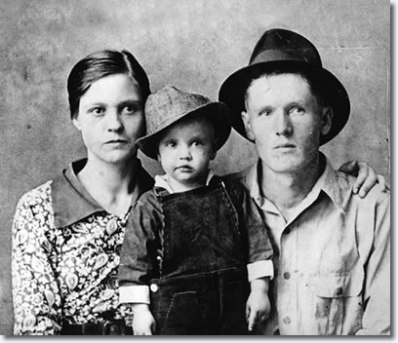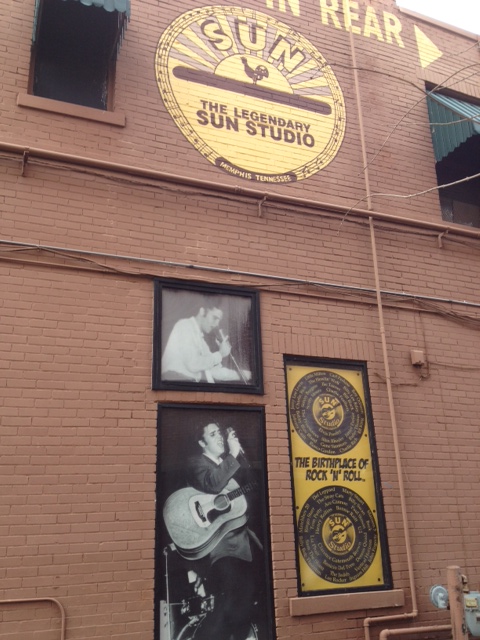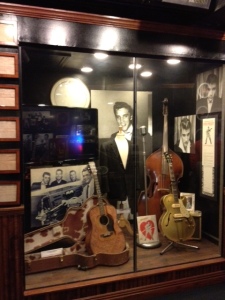By Ryan Hilligoss and Shawn Poole, February 26, 2014
“Johnny was and is the North Star; you could guide your ship by him- the greatest of the greats, then and now. Truly, he is what the land and country are all about, the heart and soul of it personified and what it means to be here; and he said it all in plain English. I think we can have recollections of him, but we can’t define him any more than we can define a fountain of truth, light and beauty. If we want to know what it means to be mortal, we need look no further than the Man in Black. Blessed with a profound imagination, he used the gift to express all the various lost causes of the human soul. This is a miraculous and humbling thing. Listen to him, and he always brings you to your senses. He rises high above all, and he’ll never die or be forgotten, even by persons not born yet- especially those persons- and that is forever.” Bob Dylan
Come Along and Ride This Train
Today marks the birthday of Johnny Cash, the legendary Man in Black and member of the Country Music Hall of Fame, the Gospel Hall of Fame, the Songwriters Hall of fame and lastly, the Rock and Roll Hall of Fame. Much like other early recording artists, Cash’s musical style included country, gospel, bluegrass, gospel, and rhythm and blues, helping form one portion of early rock and roll at the Memphis Recording Service at 706 Union Avenue in Memphis, Tennessee, otherwise known as Sun Studio. Cash directly inspired, collaborated with or helped nurture the careers of musicians as diverse as Bob Dylan, Roy Orbison, Carl Perkins, Snoop Dog, Kris Kristofferson, John Mellencamp, and Bruce Springsteen. And my friend Shawn Poole and I have collaborated to explore the musical connections between these two great American artists.
Like Bruce Springsteen, Johnny Cash came from very humble beginnings and went on to become a major figure in American music. Born in Kingsland, Arkansas in 1932, the family soon moved to Dyess, Arkansas as part of an FDR Works Progress Administration program to inject money into the economy. At a very young age, Johnny began working with the rest of his family in the cotton fields of what many called “The Sunken Lands” due to it’s tendency to flood and remain swampy, making the cultivation even more difficult than it already was. Part of the Dyess colony provisions was to purposefully exclude blacks as part of social engineering studies. But Johnny still heard a wide variety of musical styles on his parent’s radio as he, his brothers and sisters lay on the linoleum kitchen floor trying to cool down after working in the hot, humid cotton fields. On the radio he heard music coming from faraway places he could only imagine like New Orleans, Chicago, Memphis, and Nashville. He absorbed different sounds including the country and western of Roy Acuff and Eddy Arnold, gospel blues of Sister Rosetta Tharpe, bluegrass of the Louvin Brothers, the pop of Bing Crosby, and some “race music” broadcast from Memphis, his future home. What mainly caught his ear and fired his imagination were all the great artists who performed on The Grand Ol’ Opry such as The Carter Family and Jimmy Rogers. Of those days, Cash wrote, “Nothing in the world was as important to me as hearing those songs on the radio. The music carried me up above the mud, the work and the hot sun.”
The Johnny Cash TV Show aired from 1969-1971 and always opened with a segment of Johnny riding a train and inviting people to come ride along on a journey. Video would play over Cash singing: Come along and ride this train/Cross the mountains, prairies, reservations, rivers, levees, trains/come along and go with me/I know where there’s people you would like to get to know/I heard a story that I’d like to share with you/I will show you things that I’m sure you’d like to see/come along and ride with me/Come along and ride this train. In introducing his television show, Cash did as he always did throughout his career which was to invite all people of every shape, color, stripe, and background to come along a great journey and discovering new sights and thoughts. Over his 50 year career, Cash sang for and about people from all walks of life including the poor, prisoners, working class, forgotten Natives, criminals, blacks and whites, rural and urban, liberal and conservatives, presidents and paupers. As Tom Petty once said, Johnny was friends with Presidents and he was friends with people at the bus stop. Johnny also became a major figure in country music and even folk music, greatly influencing many artists. Like Bruce, Johnny had a very broad vision of American music and he tried to expose his audience to many different musical styles and artists. Also like Bruce, Johnny remained concerned with the problems of common people, even after he became wealthy and famous. In following their unique artistic visions, both Johnny and Bruce truly have walked the line.
So now let’s start our musical tribute to Johnny Cash on what would have been his 82nd birthday with a set of some of Johnny’s most famous songs covered by Bruce Springsteen. Fittingly, our first selection is Bruce’s beautiful version of I Walk The Line, recorded live in Landover, MD on September 13, 2003. It was the opening song of Bruce’s first concert after the news broke that Johnny Cash had died.
The version of Ring of Fire played here was from a November 18, 2009 concert played by Springsteen and the E Street Band in Nashville, Tn and includes the terrific, mariachi horn work of Curt Ramm. Ring Of Fire was co-written by Merle Kilgore and Johnny Cash’s wife, the late, great June Carter Cash. We’ll be discussing some more about Ring Of Fire a bit later when we get to Bruce’s song We Are Alive. The other clip played was Bruce’s version of Give My Love To Rose, featured on the Johnny Cash tribute album Kindred Spirits. The version you heard includes Bruce’s spoken intro to the performance from when it first appeared on the 1999 All-Star Tribute to Johnny Cash television special. Bruce’s version of Give My Love To Rose was done in the same style as much of the material on his 1995 folk/country-influenced album The Ghost of Tom Joad. Speaking of that album, our friend and fellow Springsteen fan Jeannette Amodeo found online a very cool image of an undated, handwritten note from Bruce Springsteen to Johnny Cash. The note, most likely written to accompany a copy of The Ghost of Tom Joad album, reads as follows: “Hello, Big John. Here’s my latest! It’s got a lot of country and folk influences and I thought you might get a kick out of it. All my best. Always, Bruce Springsteen.”
Nebraska: Will The Circle Be Unbroken
According to Robert Hilburn in his recent biography, Johnny Cash The Life, In 1983, amidst a series of difficulties in Cash’ career with Columbia due to lagging sales and poor promotion on their part, Cash headed into the studio to record a new album. Cash brought with him a handful of songs he had written, but when he played them for his producer Brian Ahern, the producer was not impressed and instead played him two tracks from Springsteen’s Nebraska, Johnny 99 and Highway Patrolman. Cash was familiar with Springsteen and he seemed vaguely familiar with Johnny 99, but he had not even remotely considered recording it. According to Hilburn, “Cash loved the Springsteen songs for much the same reason he so admired Dylan’ songs: their daring, compassion, and commentary. He also enjoyed being back in the creative center of pop and rock, the music of young America. But, country radio ignored the album Johnny 99. The album never had a chance. In retrospect, all the parties may have been overly optimistic. You couldn’t have been any hotter than Springsteen in 1983. He was in many ways the, rock and roll equivalent of Johnny Cash, not just a record maker but a heroic figure who music and image reflected many of the traditional values of America. Even so, rock radio shied away from the downbeat Nebraska. Whereas Springsteen’s last three albums had sold a total of 14 million copies, Nebraska struggled to reach the 1 million mark.”
In 1992, Springsteen told Rolling Stone magazine that he listened incessantly to Cash’s Sun recordings in the days before he wrote his album Nebraska, a work haunted by the spare, gloomy sound of Cash’s early records. If you listen to Springsteen’s songs such as State Trooper, Mansion On The Hill, Nebraska, or My Father’s House, you can definitely hear echoes of Cash’s early recordings such as Give My Love To Rose, Folsom Prison, I Walk The Line and Train of Love. What is ironic here is that in 1983, both artists were simutaneously inspiring the other without the other’s knowledge. And the big old wheel keeps rolling around again. Cash’s covers of Johnny 99 and Highway Patrolman feature guitar work by Rock and Roll Hall of Famer James Burton, who’s played with Elvis Presley, Rick Nelson and hundreds of other artists, including Bruce Springsteen. Shawn recently had the pleasure of meeting and interviewing James Burton for Backstreets.com and James told Shawn that, like Johnny Cash, he loved to perform “Highway Patrolman.”
In 2003, Artist’s Choice, a series produced by Sony Music and distributed through Starbucks, released a Johnny Cash edition. The 14 track album consisting of handpicked selections from Johnny which begins with Hank Williams’ Lovesick Blues and ends with Mahalia Jackson’s His Eye On The Sparrow, and has a wide variety of other styles and artists in between including Kris Kristofferson’s Me and Bobby McGee, Roberta Flack’s The First Time I Ever Saw Your Face and Bruce Springsteen’s Highway Patrolman. In the liner notes, Cash writes, “I just recorded a Bruce Springsteen song called “Further On Up The Road.” It’s from his The Rising album. I always have been a Springsteen fan, and my favorite album of his is Nebraska, and my favorite song of his is “Highway Patrolman.”
Further yet, in Johnny’s 2nd autobiography, Cash writes about his friendship with Bob Dylan back in the 1960’s and of visiting Dylan in Woodstock, NY. “Bob and I indulged ourselves in a lot of guitar picking and song trading. There’s nothing on earth I like better than song trading with a friend or a circle of them, except perhaps doing it with my family. As Bruce Springsteen wrote, ‘Nothing feels better than blood on blood.'”
Included in that set was Johnny’s version of I’m On Fire which was recorded by Johnny in 2001 and was included as a bonus track on the album Badlands: A Tribute to Bruce Springsteen’s Nebraska.
Our friend and fellow Springsteen fanatic Jeff Calaway also reminded us recently of how Johnny was among the first country artists to cover Springsteen. Johnny later listed Bruce among his favorite writers, saying that he drew inspiration from writers like Bruce just as Bruce and others had drawn inspiration from the music of Johnny Cash. “I want my songs to be as good as theirs,” Johnny said of songwriters like Bruce Springsteen. And who do we have to thank for turning Johnny Cash onto the music of Bruce Springsteen? His own daughter, of course. Shortly after Johnny’s first Springsteen covers were released, Rosanne Cash got to meet Bruce Springsteen in person for the first time, and he told her how thrilled and honored he was that her father had recorded some of his songs. She immediately replied, “Who do you think sent him Nebraska?” Before Johnny died in 2003, he gave Roseanne a list of the 100 of the most important songs. In 2009, she recorded 12 of those songs as part of her album The List including a duet with Bruce Springsteen, together singing beautifully on their version of the old Don Gibson hit, Sea of Heartbreak. Also below is a great clip of Roseanne talking about recording the song with Bruce and how he “was our dream date for the song”.
Bitter Tears: The Ballad of Ira Hayes
In 1963, Cash scored his biggest hit to date in his career with Ring of Fire which peaked at number 1 on the country charts, crossed over to the pop charts and had made him one of the biggest selling country artists of the time. Most artists and record labels would keep pushing to maximize their hot streak by trying to score another big smash. In typical Cash fashion, he went in the opposite direction and chose to record a concept album on the treatment and troubled chapter in our nations’ history, the stories of the Native Americans.
Like other artists including Elvis who sold his back catalog to RCA in 1973 so he could form his own publishing house and record songs he wanted to sing and not what the label wanted, Sam Cooke who formed his own recording and publishing houses, and Bruce Springsteen who sued his former manager to obtain outright ownership over his own songs, Cash struggled for artistic autonomy throughout his career. Signed in 1955 by Sam Phillips at Sun Studio, Cash scored several big hits including I Walk The Line and Folsom Prison, but he grew frustrated with Phillips who refused to allow him to record any gospel or spiritual songs. Cash left for Columbia Records in 1958 on the sole reason that they agreed to let him record a gospel album.
While listening to artists perform in 1963 in Greenwich Village after a show in NYC, Cash heard native songwriter-performer Peter Lafarge sing several songs on the plight of his native people. Cash, always a student of history and current events, was transfixed and decided immediately that he wanted to work with Lafarge and record his songs. Cash got clearance from Columbia and tore into the songs with a vengeance his musicians had never seen before. The album Bitter Tears featured eight tracks including As Long As The Grass Shall Grow, Custer, and The Ballad of Ira Hayes which chronicled the travesty of the life of WWII veteran and hero who was part of the famous photo taken on Mt. Saribachi with Marines raising the flag. The album was not promoted by Columbia and radio stations around the country refused to play it for fear that their conservative listeners wouldn’t like the message and would no longer listen to the station. Cash was rightfully enraged and took out a full-page ad in Billboard, and in the blessed name of Elvis, well, he just let it blast. In his rambling screed, Cash lashed out with the famous question, “Where are your guts?” He also questioned people’s conscience by including American Indian rights among other civil rights issues of the time, “Ballad of Ira Hayes is strong medicine. So is Rochester- Harlem, Birmingham, Vietnam.” Despite radios quiet boycott of the album, it still sold well thanks to Cash’s own efforts in reaching out to friendly DJs and the fans directly by barn storming the country from town to town.
Recently, writer Douglas Bradley completed a story on Ira Hayes that is well worth the time and gives a lot more background on Ira Hayes story as well as Cash’s campaign to raise awareness of the issues of Natives. You can read it by clicking the imbedded link. Below you can hear Johnny sing Big Foot, recorded in 1972 and released on his America album. Cash wrote this song after going to visit the Wounded Knee Massacre site in South Dakota. Like Cash, Springsteen has used his artisitic freedom to speak out for those whose voices aren’t typically heard such as American Skin(41 Shots) which brilliantly opens a discussion on the roles of all parties involved in the Amadou Diallo incident in NYC in 1999, writing “we’re baptized in these waters and in each other’s blood, Youngstown which examines the end of the steel mills, jobs and a way of life for working class people in Ohio and everywhere, and Streets of Philadelphia which took a look at AIDS victims.
When The Night Winds Wail: Long Black Veil
We recently stumbled across this live version of Long Black Veil performed by Bruce Springsteen & The Seeger Sessions Band at their May 16, 2006 show in Amsterdam. Long Black Veil was originally a 1959 hit recorded by country-music singer Lefty Frizzell, though it sounds as if it’s a much older folk song. Johnny Cash performed a memorable version of the song on his classic album Johnny Cash at Folsom Prison. Johnny also performed Long Black Veil with Joni Mitchell on the very first episode of his famous late-sixties television show, and now you’re going to get to hear Bruce & The Seeger Sessions Band’s beautiful take on the song, performed with verses sung alternately by Bruce and “The Chocolate Genius” himself, Mr. Marc Anthony Thompson.
A Shot Rung Out Across The Land: I Hung My Head
Johnny and Bruce each recorded unique versions of Sting’s song I Hung My Head. Johnny’s version was released on his 2002 release, American IV: The Man Comes Around. This was a perfect song for Johnny to cover, fitting in well with the grand Johnny Cash tradition of murder-ballads and story-songs like his first big hit for Columbia Records, Don’t Take Your Guns To Town. Bruce’s version, featuring some blistering guitar work, was performed live with Sting’s own band, including former E Street Band member David Sancious, at Sting’s 60th Birthday celebration and released officially on Sting’s free iPad app. According to Springsteen biographer Dave Marsh, Patti Scialfa gave that awesome version one of the best descriptions you could give it. According to Dave, Patti called it “Nebraska on crack.”

” I’ve given the dogs names, Sin and Redemption. Sin is the black one with the white stripe; Redemption is the white one with the black stripe. That’s kind of the theme of the album, and I think it says it for me too. When I was bad, I was not all bad. When I was really trying to be good, I could never be all good. There would be that black streak going through.”
The American Recordings: The Phoenix Rises Again
In 1992, Cash was struggling at Mercury Records which was not promoting his albums, and for financial reasons, Cash was feeling forced to play in Branson, a mecca for aging entertainers set in the foothills of Missouri. He told Rolling Stone’s Steven Pond, “You know, I’m doing what I feel like I was put on this world to do. I just want to do more of the same, but I want to do it better. I want to make some records that people will pay attention to, you know? My new stuff is going to be real sparse. Never more than four instruments in the studio at any one time. I’m gonna keep it real clean and bare, use today’s technology with my old simple sound, and hope to come up with something big.” Little did he know that two years later, he would again hit it big with recordings done at American, produced by Rick Rubin who was co-founder of Def Jam Records and had worked with many artists including The Red Hot Chilli Peppers, Slayer, Run DMC and The Beastie Boys, not artists you would consider in the same style as Johnny Cash.
Cash and Rubin produced some of Johnny’s best work in decades and included American Recordings(1994), Unchained (1996), American III: Solitary Man (2000) and America IV: The Man Comes Around (2002) and many others released after his death in 2003. At the time of their release, the albums received critical acclaim, commercial success and awards including the 1997 Grammy Award for Best Country Album for Unchained.
After the death of his beloved brother Jack when he was a boy, Cash became isolated and often times went out walking for hours as he sang to himself all the songs he heard on the radio, just trying to make sense of the world and his place in it. According to Cash, “The long walk home at night was scary. It was pitch dark on the gravel road, or if the moon was shining, the shadows were even scarier…But I sang all the way home….I sang through the dark, and I decided that that kind of music was going to be my magic to take me through the dark places.” Cash had been down many dark roads in his life fighting addiction, wildness, physical ailments, the deaths of family and friends, but through it all, he found the ‘magic’ in his songs to get him home. And during his time with Rubin, he went to some very dark places indeed with songs such as Delilah’s Gone, The Mercy Seat and God’s Gonna Cut You Down.
Johnny and Rubin made inspired choices of songs to record including several new originals written by Cash as well as covers of musicians of a wide variety including U2, Neil Diamond, Trent Reznor, Tom Petty, Danzig, Dean Martin, Nick Cave, Don Gibson’s Sea of Heartbreak and Bruce Springsteen’s Further On Up The Road. On the later albums you can hear Johnny struggling with his voice at times and you can hear him laboring to breathe at times. But as Rubin wrote in his liner notes to American V: A Hundred Highways released in 2006, “But in the end, his ability to convey words in a way the listener can truly feel and believe them is amazingly consistent. He was the master storyteller.”
At the time of his death in 2003, Johnny Cash was revered by a new group of fans including punks and hipsters, their parents and their grandparents. Johnny and June played at the Glastonbury festival in England. During his set, Johnny just sat on a stool, playing acoustic guitar by himself and was in awe of playing in front of 100,000 fans. They also loved June and The Carter Family classics she sang that night. As she came off the stage, a nineteen year old dressed in black, with tattoos, piercings and a Mohawk got her attention and politely said, “Mrs. Cash you really kick ass.” Johnny wrote that on days when June was down or discouraged, he would tell her, “Mrs. Cash, don’t worry about it, you kick ass.” Just as Johnny found new fans at the end of his life and career, Springsteen, who is 64 this year, has seen something similar occur to him, especially at live shows around the world. As he looks out on the crowd each night, he sometimes sees punk rockers, body piercings, ear gauges and mohawks. He looks out and often times sees three or maybe even four generations of fans, and often times he brings a little one onstage to sing with him on Waitin’ On A Sunny Day. As he said recently on stage in Australia, “That’s good because they are the future of rock and roll.”
The Highwaymen: We’ll Stand Shoulder to Shoulder and Heart to Heart
In 1984, after being jettisoned from Columbia Records, the label he had produced album after album for 25 years, Cash formed the super group The Highwaymen with friends Willie Nelson, Waylon Jennings, and Kris Kristofferson. What’s interesting about the song Highwayman is how coincidentally similar its subject matter is to that of Bruce’s song We Are Alive, a song that also was directly influenced musically by Johnny’s recording of Ring of Fire. In another interesting coincidence, Highwayman was written by the famous songwriter Jimmy Webb, whose music was a major influence on the kind of writing Bruce did on his Working On A Dream album. Give it a listen and see what you think
Johnny Cash served in the Air Force during the Korean War, and upon his return to the states, moved to Memphis after recognizing it for its central location of all musical styles and people. Cash tried several times to get a demo session with Sam Phillips at Sun Studios but was turned away. Cash decided to wait on the steps outside the door one morning so he could catch Sam going into work. Sam granted him a quick listen and was impressed with his voice and presence but did not care for the gospel music Johnny sang that first day telling Johnny that gospel music doesn’t sell. Sam told him to come back the next day with his backing band and some original songs. Cash returned the next day with his group the Tennessee Two consisting of Luther Perkins, no relation to Carl, on guitar and Marshall Grant on bass. They played a Cash original, written while he served in Germany, Hey Porter, the first of many Cash train songs. Phillips was bowled over and quickly recorded the trio in the studio. Phillips needed a B side and sent Cash home with instructions to write a “weeper.” Cash went home and got inspired while listening to the radio when he heard DJ Smilin’ Eddie Hill go through his on air rap, “We got good songs, love songs, sweet songs, happy songs and songs that make you cry, cry, cry!”
The signature Johnny Cash sound many call the boom-chicka-boom sound, and some call the ticky-tack sound, was honed in Memphis at Sun Studios with Cash playing rhythm guitar, Luther Perkins on electric guitar and Marshall Grant on upright bass. According to Grant, “We didn’t work at that sound, it’s all we could play. Our inability had more to do with our success than our ability and I’m not ashamed of it.” The minimalist sound provided room for Johnny’s big, masculine booming voice. Perkin’s electric guitar style was basic, yet distinctive as it was used both as rhythm and a basic lead pattern, often times only using the top 3 strings. Grant’s bass playing was unadorned and plodding. More distinct was Cash’s acoustic rhythms which sounded like rustling paper which was achieved by threading a dollar bill through the strings. Between the three of them, the sound was that of a train heading down the tracks, clickity clack. It wasn’t strictly a country sound but included folk, gospel, bluegrass, and when they went up tempo, it was pure rockabilly and rock and roll.
The horn riff played in Springsteen’s We Are Alive, from his Wrecking Ball album, is openly credited as being a note-for-note recreation of the mariachi horns featured in Johnny Cash’s recording of Ring Of Fire,written by Johnny’s wife June Carter and Merle Kilgore. It was first recorded by June Carter’s sister Anita, but after it failed to become a hit, Johnny decided to record it himself after having a dream in which he heard the song played with mariachi horns. Legendary producer Cowboy Jack Clement, who passed away in 2013, has been credited with coming up with the famous horn arrangements. Clement said, “Johnny didn’t conform to anything, except to to the world. At the time, having horns on a hillbilly record was kind of weird, and he thought I was weird enough to understand it. And he called me, thank the lord.”
Besides using Johnny Cash’s mariachi-horns sound, We Are Alive also has the same classic “boom-chicka-boom” bass patterns and guitar lines frequently used by Johnny Cash’s legendary Tennessee Two backup band at Sun Records. While Bruce has aptly described We Are Alive as “Johnny-Cash-meets-Ennio-Morricone,” there’s also much more here than a musical connection. The lyrical concern with social justice, the idea that the past remains very connected to the present and that the differences among us humans can be beautiful but never more important than our commonalities, are all key elements in the work of both Johnny Cash and Bruce Springsteen. When I hear We Are Alive, I am reminded of something Sam Phillips said long ago when he heard Howlin’ Wolf sing for the first time in this studio, “Yes, yes. This is it for me. This is where the soul of man never dies,”
The Land of Hope and Dreams: Come Along and Ride This Train
Johnny once said, “There’s nothing that stirs my imagination like the sound of a steam engine locomotive. That lonesome whistle cutting through the night and that column of black steam throwing shadows across the land. When I was a boy, the trains ran by my house and they carried with them the promise that somewhere down the tracks, anything would be possible.” The truth of that statement is clear if you read through Cash’s discography which includes train songs of one kind or another from start to finish including The Orange Blossom Special, Train of Love, Come and Ride This Train, Folsom Prison Blues, I heard That Lonesome Whistle Blow, Rock Island Line, and John Henry.
On his show, Cash opened every episode with his song Come and Ride This Train in which he asked his viewers at home and in the auditorium to come with him so he could show them interesting places and introduce them to interesting people; this was a theme in his life as well as in his art. The Johnny Cash TV Show was a “big tent” affair. Cash welcomed everyone onto his show from all kinds of musical styles, cultures, and backgrounds. He excluded no one and stood up to the network on many occasions including his insistence on singing Kristofferson’s Sunday Morning coming Down and including the lyric, “On a Sunday morning sidewalk, I’m wishing lord that I was stoned.” Between 1969 and 1971, 58 shows were broadcast on ABC including guests as diverse as Ray Charles, Mama Cass, Neil Young, Kris Kristofferson, Louis Armstrong, Pete Seeger, George Jones, Bob Dylan, Bill Monroe, Joni Mitchell and Stevie Wonder. All of his guests performed on the stage of the Ryman Auditorium, site of the Grand Old Opry, and the artists who, both musically and racially, made a diverse rainbow of society were introduced to Johnny’s fans, both live and on television, on a weekly basis, and helped open minds of people everywhere during a tumultuous time in our history. On the meaning of the show to the country, artist Steve Earle states, “I think it’s really hard for anyone to imagine now how important the Johnny Cash Show was, especially to people like me. The knowledge that Johnny Cash knew who Neil Young was validated me, made me feel like I wasn’t so weird because I listened to both kinds of music.”
In a very similar way, Springsteen has been creating a big tent of his own between his audience and the artists he has collaborated with and inspired. Just in the last few years, Springsteen has played on stage and recorded with a wide array of musicians ranging from Paul McCartney, Alejandro Escavedo, The Dropkick Murphys, Arcade Fire, Brian Fallon, Eddie Vedder and others. In a recent move, Springsteen has become inspired by, recorded with and added guitarist Tom Morello to the E Street Band for live performances.
In 1999, Springsteen wrote a new song entitled Land of Hope and Dreams as a way to start anew with the E Street Band of which they had not played together mostly for over ten years. He took the old spiritual folk tune of This Train, made popular by Woody Guthrie and Bill Broonzy earlier in the 20th century and changed the lyrics to be inclusive: this train carries saints and sinners, this train carries losers and winners, this train…thieves and sweet souls departed, this train carries lost souls and faith will be rewarded once the big wheels roll through fields where sunlight streams. In live versions, Springsteen throws in lines from Curtis Mayfield’s People Get Ready when he declares, “You don’t need no ticket you just get on board.” Springsteen, much like Cash, wants all of us to ride along with him so we could be ‘good companions for this part of the ride.’ As Dave Marsh wrote in Born To Run, each night in concert during the closer of Detroit Medley,Springsteen used to cry out to the crowd that he saw a train coming down the tracks and all aboard. “Springsteen made the song an invitation and a command. It was a promise of adventure, and each night as I heard him sing it, the same thought came into my head, “where are we headed, where are we bound? Then I’d shake my head and smile and hop aboard myself. The answer was clear: together, we would try to make it home again.”
We’re all riding on a great Mystery Train of sorts as we go through our limited time on earth, but with a little luck and some understanding, we can ride the train together and be good companions.
Coda: I’ve Been Everywhere Man
At the end of his autobiography, Cash sits in his dressing room before a show, lost in his reverie and what Lincoln called “the mystic chords of memory” as he thinks of all the places he has traveled, the people in his life and all the music and closes with this, the essence of The Man In Black, “It’s about time for me to go to work, or if you like, to go play. That’s what we music gypsies call it, after all. I’ll put on my black shirt, buckle up the black belt on my black pants, tie my black shoes, pick up my black guitar, and go put on a show for the people in this town.” Much like Johnny, Springsteen often wears black when on stage and he states that one of his biggest thrills in life is to blow into a town, tear it up on stage while congregating with his audience,forging bonds between himself, the musicians, the fans and each other, and then heading out-of-town headed for the next destination.
One of the last songs Johnny recorded prior before passing was the old standard We’ll Meet Again. According to Rick Rubin, Johnny, knowing his time was drawing near, insisted all the session musicians sing on the final chorus. He insisted his family be brought into the studio to sing on the chorus. And then much to Rubin’s chagrin, Johnny insisted Rubin step up to the microphone and join in as well. He wanted everyone to join and help him out in a family way. That’s the way Johnny Cash always wanted it, everyone hopping aboard and riding the train together. Yeah, we’ll meet again, don’t know where don’t know when, but I know we’ll meet again some sunny day. Thanks Johnny. As the songs goes, we’ll see you further on up the road.
For those of you reading this who have access to Sirius/XM radio, Shawn and I have teamed up to record a special guest DJ spot that will be aired on E Street Radio Channel 20 in which we discuss Johnny and Bruce and play a lot of good music. The schedule is as follows in EST: Wednesday February 26 at 4:00pm, Thursday February 27 at 5:00pm, Friday February 28 at 9:00am, Saturday March 1 at 6:00pm and Sunday March 2 at 11:00pm(roughly).
The Ties That Bind: More connections, sources, quotes, brushes with greatness
While there are many solid connections between Cash and Springsteen as evidenced above, there are several others that we hear in some of Springsteen’s other work.
– On his album Devils and Dust, Springsteen’s Leah contains the line: I walk this road with a hammer and fiery lantern/with this hand I’ve built and with this hand I’ve burnt” which appears to be a direct homage to Cash’s album art for his classic concept album Blood, Sweat and Tears.
-In his song Trouble River, Springsteen writes, “Trouble River, six foot high and risin'” which is a direct nod to Cash’s own Five Foot High and Risin’ which Cash wrote to chronicle an event that occurred near his family’s farm in Dyess.
– In Tougher Than The Rest, Springsteen includes this:” Love is a thin, thin line/But I want you to know I’ll walk it for you anytime,” which is a direct link to Cash’s classic I Walk The Line.
– On Springsteen’s Matamoras Banks, the guitar melody and story line share a fair resemblance, at least in spirit, to Cash’s Give My Love To Rose, which Bruce covered in 1999.
– And lastly, one of Cash’s most famous and popular songs was Jackson, performed with wife June Carter included the lines: We got married in a fever, hotter than a pepper sprout/We’ve been talking about Jackson ever since the fire went out.” Springsteen has stated that starting around 1977, he started listening to punk music as well as classic country as a way of gaining new perspectives. His 1980 album The River contained Jackson Cage which looked at a dying marriage amidst boredom of a suburban life and contained the lyrics: The cool of the night takes the edge off the heat.”
Johnny Cash’s America- Full length documentary directed by Morgan Neville and Robert Gordon
“I love songs about horses, railroads, land, Judgement Day, family, hard times, whiskey, courtship, marriage, adultery, separation, murder, war, prison, rambling, damnation, home, salvation, death, pride, humor, piety, rebellion, patriotism, larceny, determination, tragedy, rowdiness, heartbreak, and love. And Mother. And God.” Johnny Cash
Rosanne Cash essay, Long Way Home.
Johnny on advice: “Don’t ask me for advice. Whenever someone does, I’m reminded of the worst advice I ever gave to anyone. Thank God Roy Orbison ignored it. Roy and I became friends from Day 1. When he came to Memphis from West Texas. I had met him in Odessa where he and the Teen Kings did a show on local television. He was a little discouraged by the lack of progress he was making and asked me what I thought he should do. I said, “Change your name and lower your voice. You sing too high and no one will ever remember Orbison.” (Music lovers all over the world, including Bruce Springsteen who was inspired by and played alongside Orbison can agree it was a good thing Roy ignored the advice of Johnny.)




















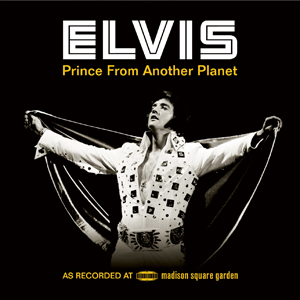


















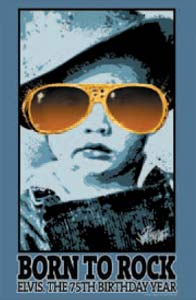
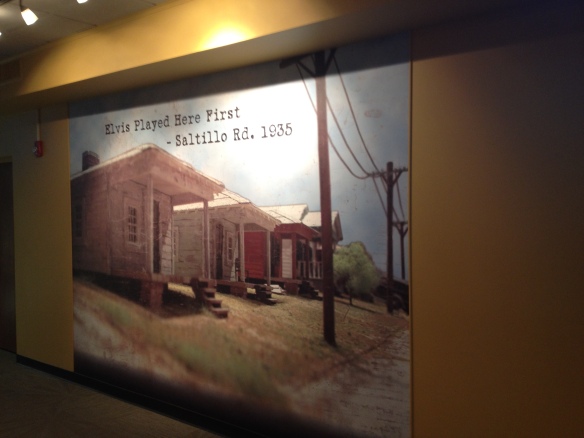
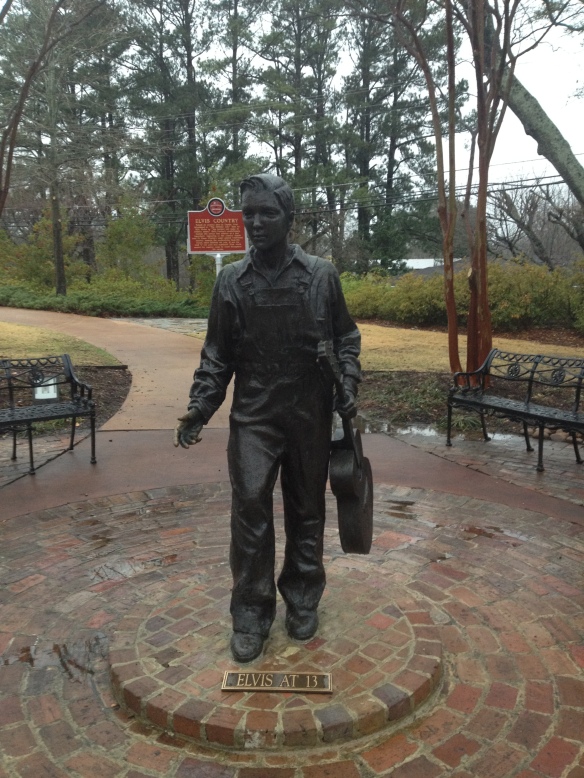
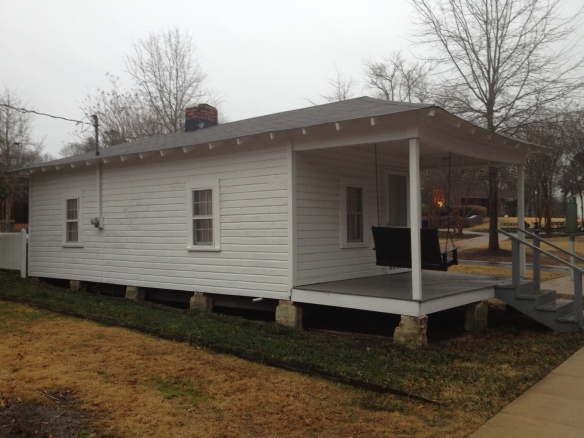


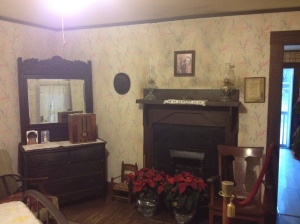
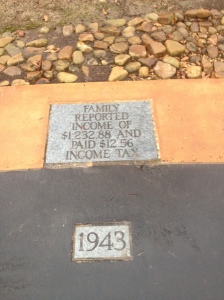
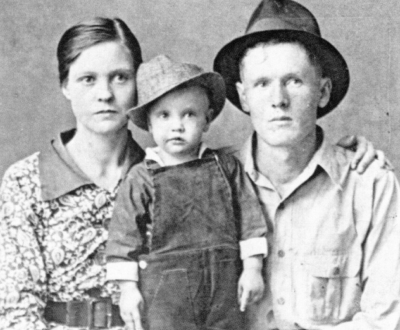
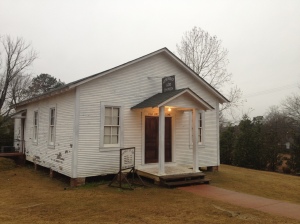
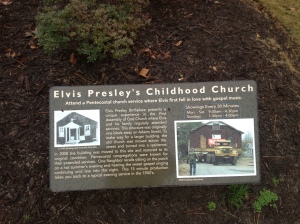
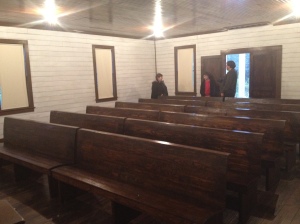
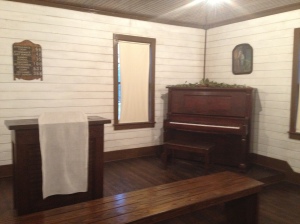
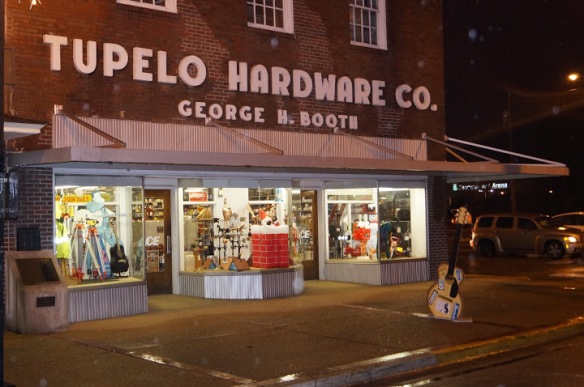
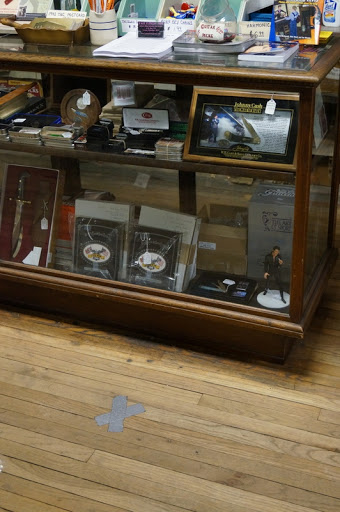
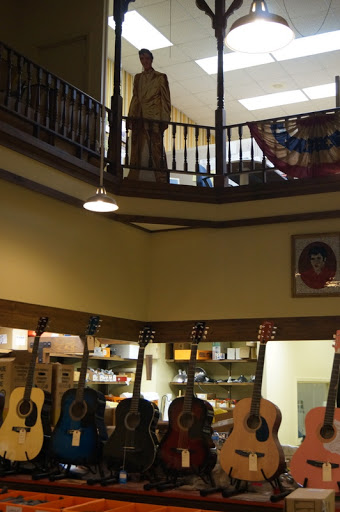
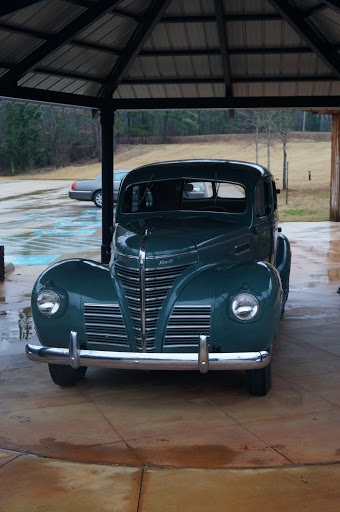
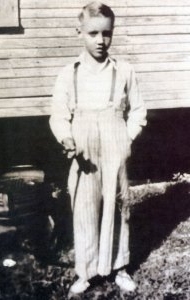

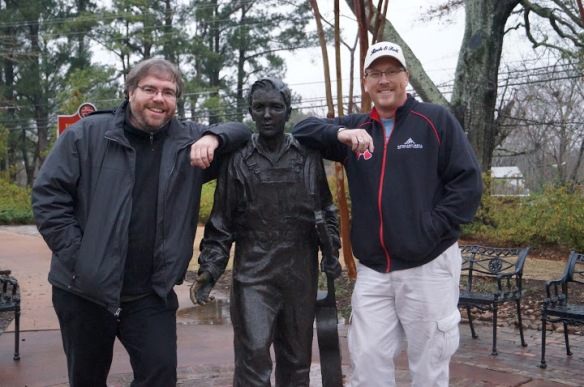
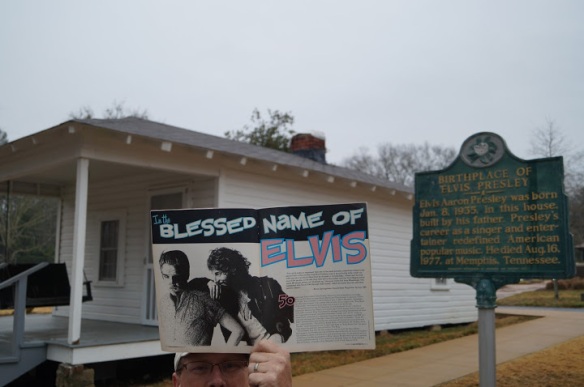
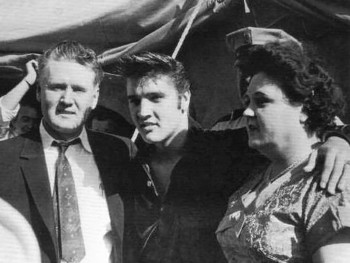
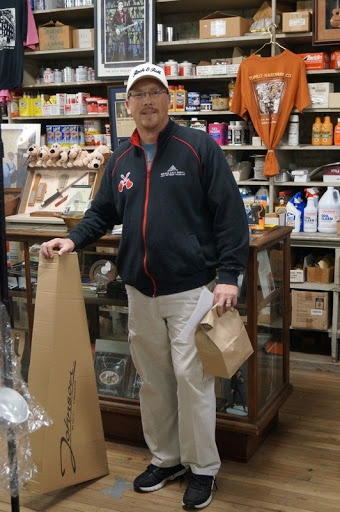

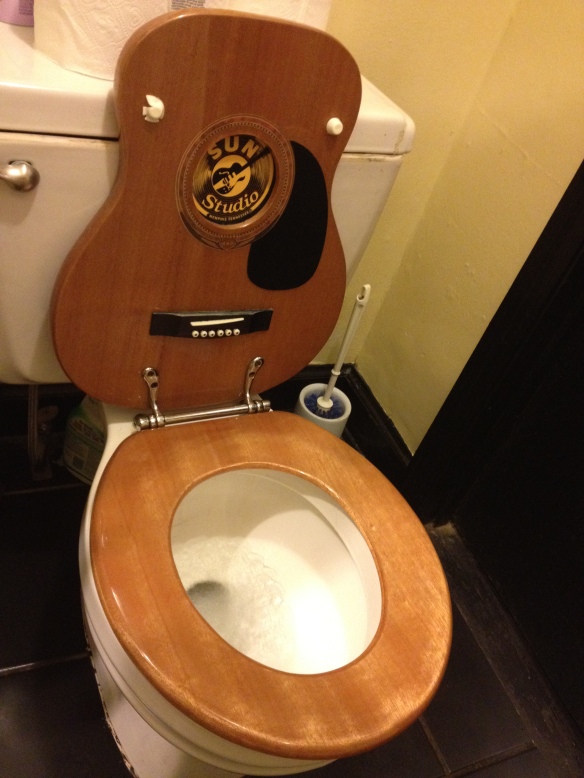










































![The_Lorax[1]](https://unionavenue706.files.wordpress.com/2012/03/the_lorax1.jpg?w=584)

